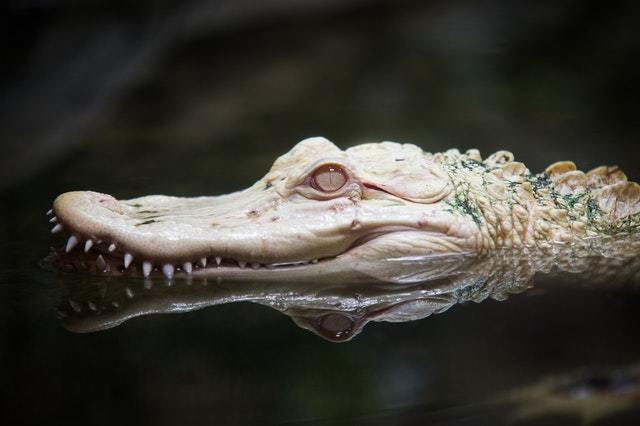Do Snails Have Lungs? (REVEALED!!)
If you’re considering buying a snail pet, then you’re thinking in the right direction. Snail pets are not only easy to care for (i.e. low to upkeep), but also fun to watch. If you’ve ever seen one crawling on its way or floating to the top of a fish tank to breathe, you will agree it’s a pleasing sight. When it comes to their respiratory function, it’s not always clear which organ they use to breathe.
So, do snails have lungs?
Most land snails have a lung they use to breathe air. These are often referred to as pulmonates. The group of land snails that do not have lungs but have gills are called non-pulmonates. In addition, the majority of marine snails use gills for breathing but there are some freshwater snails that have both gills and a lung; they will often float to the water surface to breathe air.

Do Snails Have Lungs Or Gills?
Different species of snails have different breathing systems. Some have lungs while some have gills. There are also those that use both lungs and gills to breathe.
We will classify snails into two broad categories based on how they breathe.
Land Snails
There aren’t many structures in a snail. For land snails, the main ones are the shell, head, foot, and visceral mass. Among these, only the foot and head can be seen while the other parts (including the lungs) are not visible and are protected by the “mantle”.
The visceral mass holds certain organs such as the liver, kidney, lung, and reproductive system. In reality, the lungs are actually blood vessels supplied to the mantle cavity within the visceral mass.
This means that most land snails have lungs. Breathing occurs as the lower end of the mantle cavity is raised and lowered. This is similar to how the human diaphragm moves when you breathe.
Some forms of terrestrial snails also have gills. Such snails usually need moisture or humidity to survive. But could drown if you submerge them in water.
It is also worth mentioning that snails can also breathe through their skin. Besides the lung, the mantle cavity also houses the heart, which is made up of one atrium and one ventricle.
Marine Snails
This consists of sea snails and freshwater snails. These are otherwise known as “gilled” snails because the majority of them breathe through a single gill while some have two gills.
The gills function just like the lungs in terrestrial snails except that it absorbs oxygen from the water instead of air. It is also found inside the mantle cavity.
Interestingly, some freshwater snails also have lungs and will often come up to the surface of the water to get oxygen from the air.
How Snails Breathe Through The Lungs
As earlier indicated, a part of the snail’s body called the mantle provides cover to the internal organs. The mantle or small cavity is where the lung is located. It’s quite muscular and is used by the snail for expanding and compressing the lung muscles.
Air passes into the mantle through a small opening on the right side called the “pneumostome”. As air enters the lung inside the cavity, gas exchange occurs and oxygen is absorbed while carbon dioxide is expelled.
The snail often keeps the pneumostome close when it’s not breathing in order to avoid losing moisture. Besides using it for breathing, snails also expel byproducts or food waste through the pneumostome.
Generally, all snails that breathe using just their lungs are called pulmonates. It is believed that these snails used to have gills but lost them over time and adapted to breathing only through a lung. Most pulmonates live on land but there are some aquatic snails that have evolved to breathe in a similar way. These snails will often come to the surface of the water to respire.
Do land snails have lungs?
Yes, land snails have lungs. Most of them survive by breathing oxygen in the air. There are some that have gills but these are rare.
The majority of land snails are pulmonates and have just one lung. These snails lack specialized gills for breathing underwater; neither can they swim.
Non-pulmonate land snails have a gill instead of a lung and are commonly found in humid environments.
Do nerite snails have lungs?
Like most marine snails, nerite snails breathe using their gills. Although they commonly live in freshwater today, they used to be marine creatures.
In order to survive, nerite snails breathe in dissolved oxygen from water. Like most freshwater snails, they also move to the water surface and may climb above the water line.
However, they cannot stay out of water for a long time otherwise they may dry out and die, a process known as desiccation. This is because they lose water through their skin when outside the tank or pond.
Do rabbit snails have lungs?
Yes, rabbit snails have a lung that they use to breathe air when they climb to the wat surface. However, like mystery snails, they also have gills. The major difference is that they don’t go up to the surface of the water as often as mystery snails do.
At the moment, over 50 species of rabbit snails have been reported. These include yellow rabbit snails, white spotted rabbit snails, golden rabbit snails, black rabbit snails, etc. Understanding how rabbit snails breathe is an important step in breeding and caring for them.
Do mystery snails have lungs?
Yes, mystery snails have lungs. They are among the few types of aquatic snails that possess both gills and a primitive lung. This simply implies that they can survive both in water and above the water line.
This is why you will often see them glide to the water surface after some time. When they do, they will often extend a siphon to suck air and inflate their lungs.
The oxygen derived from the air is used to supplement the one the snail gets from breathing water through its gills. For this reason, mystery snails are often said to be amphibious, which means they are adapted for both air and water but they are mostly found in rivers and lakes.
Interestingly, the oxygen level in rivers and lakes is usually low. So, it’s no surprise the snails are equipped with both gills and a lung to ensure they get all the oxygen they need to survive.
Do aquatic snails have lungs?
While most aquatic snails use gills to breathe underwater, some also have lungs that they occasionally use to breathe air.
Freshwater snails with lungs typically move to the surface of the water and gulp air from above using a snorkel tube. This way, they are able to fill their lungs with the oxygen they need to survive.
Some snails store the air as bubbles in their shell and extract oxygen from it when they are underwater. In other words, if the snails are left in water for too long with no way of coming to the surface, they will likely drown.
What Do Snails Breathe In?
This largely depends on where the snail is found and the type of respiratory system it has. Snails that have lungs breathe the oxygen in the air, while snails with gills breathe the oxygen in the water. In both cases, the snails derive oxygen and expel carbon dioxide. As earlier indicated, certain snail species have both lungs and gills, which makes it possible for them to breathe in oxygen from both air and water.
How Many Lungs Do Snails Have?
Air-breathing snails typically have one lung. These snails are mostly pulmonates and include both terrestrial and aquatic snails. Aquatic pulmonate snails have reduced gills and thus rely on the thin wall of their mantle cavity to absorb oxygen.
Pulmonates snails (i.e., snails that breathe through their lungs) are the largest group in the gastropod class.
Final Words: Do Snails Have Lungs?
To conclude, most snails have lungs. Most terrestrial snails have only one lung while some aquatic snails have a lung and a gill. However, most snails living in the ocean have well-developed gills they use for breathing.
A snail’s lung or gill serves the same purpose, which is to absorb oxygen from air or water. However, the breathing system is not exactly the same for each type of snail.
The complexity of their respiratory function is connected to how they’ve evolved over time. For instance, it is believed that some aquatic snails lost one of their two gills while some that migrated to land switched their gills for a primitive lung. This primitive lung is often called the pallial cavity.
More Resources
http://creationwiki.org/Snail#Land_Snails
https://en.wikipedia.org/wiki/Land_snail#Physical_characteristics
https://en.m.wikipedia.org/wiki/Respiratory_system_of_gastropods
https://allanspetcenter.com/caring-for-different-types-of-freshwater-snails/
https://www.molluscs.at/gastropoda/index.html?/gastropoda/freshwater2.html





